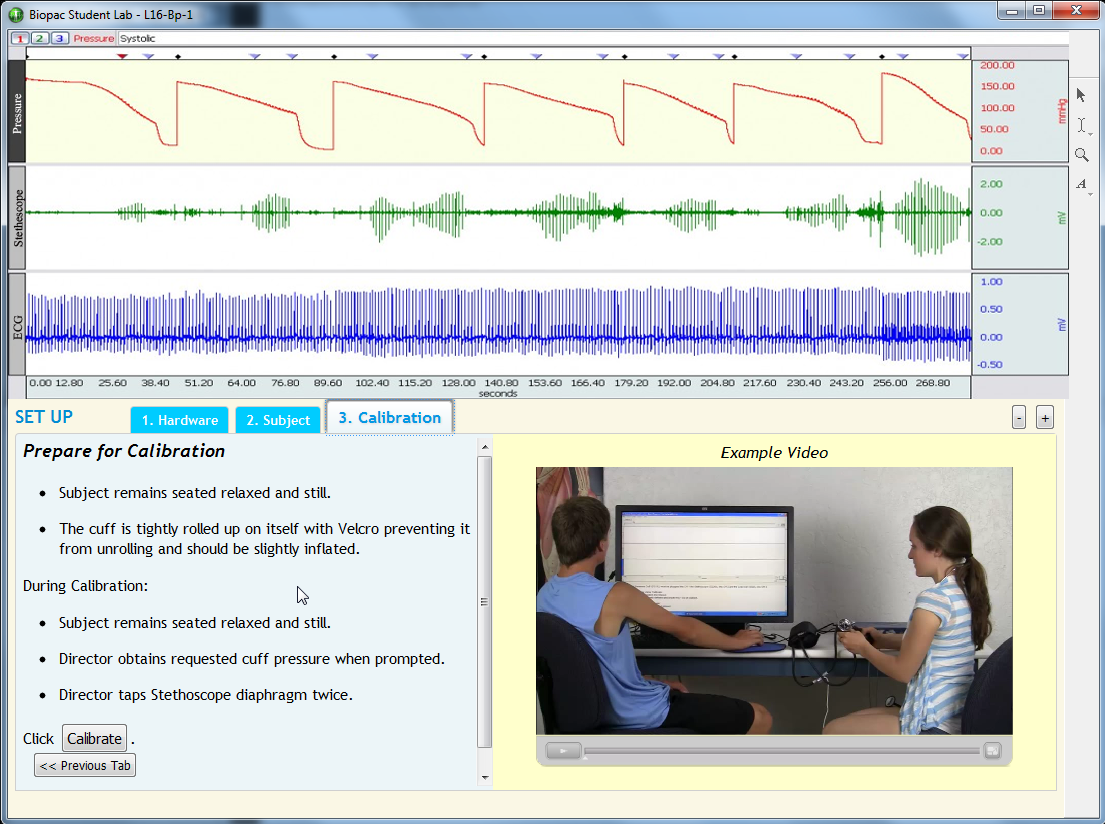L16 Blood Pressure

In the Systemic Blood Pressure lesson, students use the auscultatory technique to record arterial blood pressure.
Students record blood pressure using a cuff, pump and pressure gauge, Korotkoff sounds using a microphone, and ECG using Lead II. The system will display cuff pressure, Korotkoff sounds and ECG for easy determination of systolic blood pressure. Students view the Korotkoff sounds and listen to them with a stethoscope or headphones.* They will perform a task designed to change their blood pressure.
* BSL 4.0.2 and above includes a headphone output option for monitoring stethoscope sounds through OUT1/OUT1A/40HP via the MP Analog Output or headphone jack.
Experimental Objectives
-
To use an Auscultatory method for an indirect determination of systemic arterial and diastolic blood pressure and to correlate the appearance and disappearance of vascular sound with systolic and diastolic pressure respectively.
-
To measure, record and compare systemic arterial blood pressure in the right arm and the left arm of the same subject under identical conditions.
-
To measure, record and compare systemic arterial blood pressures in the same subjects under different experimental conditions of rest and exercise.
-
To compute, record and compare pulse pressure and mean arterial pressure under different experimental conditions of rest and exercise.
-
To correlate the Korotkoff sounds to the mechanic events of the cardiac cycle.
Tasks Performed by the Student
BSL Lessons are designed to allow at least four students to record and save data in a normal lab period (60-90 minutes). Typically, labs work most efficiently with three or more students working together at each BSL station.
- Record blood pressure while sitting down.
- Record blood pressure while lying down.
- Record blood pressure while sitting down, recovering from mild exercise.
Videos
BSL L16 Calibration SS19L
BSL 4 L16 Blood Pressure
Biopac Student Lab Student Download
Lesson Hardware
This lesson requires a Biopac Student Lab (BSL) System and the following hardware. If your BSL System does not include all hardware items, expand your system by selecting required items below. For more details, review the Lesson: L# BSL Lessons - see the Lab Manual or launch BSL; A# and H# BSL PRO Lessons, click the PDF link above to review full setup, recording, and analysis procedures.
Stay Connected